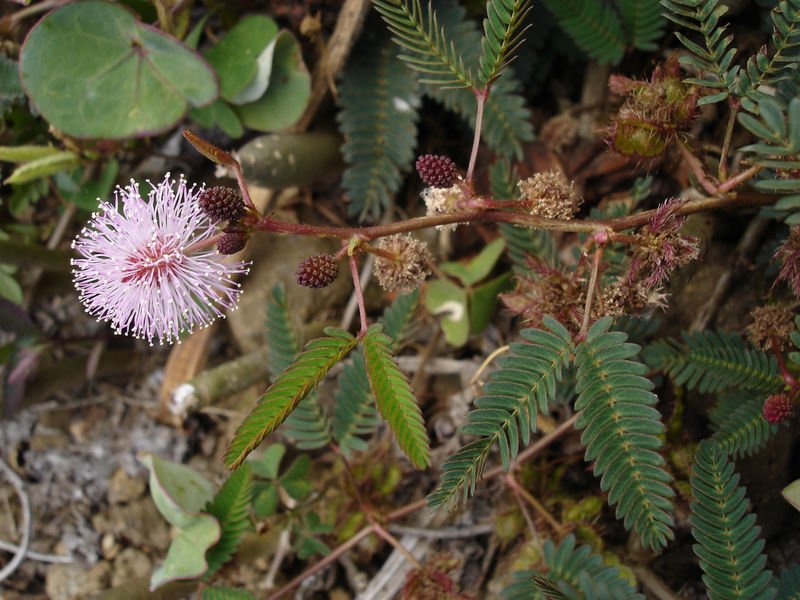3. Another euphemism, a more interesting one, is rau hei for a hanged victim. Rau hei. 1. Branch of mimosa. 2. Killed enemy. 3. Hanged 'fish'. 'Branche du mimosa (signe de mort), ennemie túe (poisson suspendu)' according to Jaussen. Barthel. The mimosa plant is very special:
"The Sensitive plant (Mimosa pudica L.) is a creeping annual or perennial herb often grown for its curiosity value: the compound leaves fold inward and droop when touched, re-opening within minutes. Mimosa pudica is native to Brazil, but is now a pantropical weed. Other names given to this curious plant are Humble plant, TickleMe plant, Shame plant, Sleeping Grass, Prayer plant, Touch-me-not, Makahiya (Philippines, meaning 'shy'), Mori Vivi (West Indies), mate-loi (false death) (Tonga) ... ... In the evening the leaflets will fold together and the whole leaf droops downward. It then re-opens at sunrise ..." (Wikipedia) We know (e.g. from the myth about Ulu and Mokuola) that life and death are two sides of the same coin - unless somebody dies life is doomed. The act of sacrificing good specimens will generate strength in those who live on. The 'vital spirit' is so to say transferred to a new body. To sacrifice or to be willingly sacrificed is important in difficult times. And difficult times can be avoided if people sacrifice as a precaution. And a hanging 'fish' is like a mimosa plant, death is not definite but only illusory, because life will recycle into a new vessel. Rau means 'leaves', 'to multiply', etc, and hei is 'head-band', 'to entwine', etc. Taken together rau hei can then be understood as 'proliferate from being entwined with a string of heads' (of hanging sacrifices, with their heads like beads on a pearl necklace). The concept of being connected with invisible cords to the dead was a prominent feature of the beliefs of the ancient Polynesians. |
